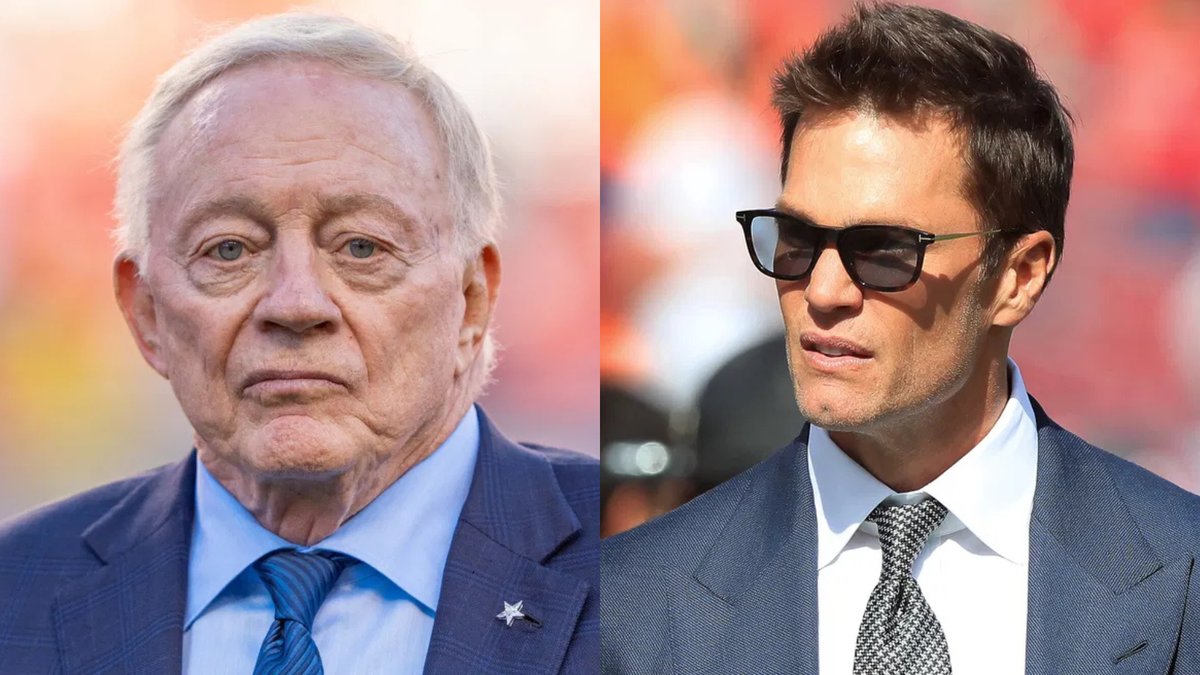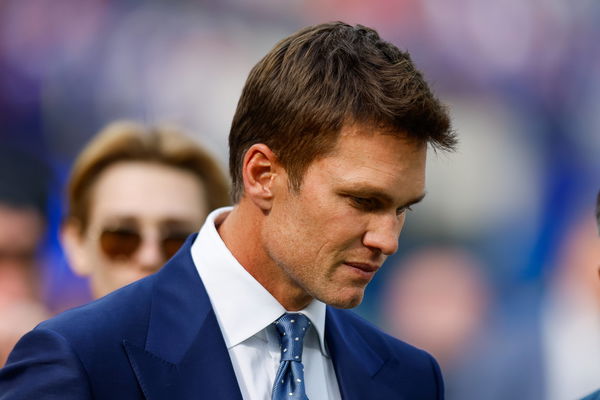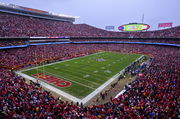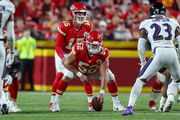

Tom Brady now owns about 5 % of the Las Vegas Raiders, a share formally approved by NFL owners in October 2024 while also serving as a lead analyst for Fox under a 10-year, $375 million contract. “I’m eager to contribute to the organization in any way I can, honoring the Raiders’ rich tradition while finding every possible opportunity to improve our offering to fans,” Brady had said after receiving his approval. Rewinding to last week’s Chargers game, Brady appeared in his team’s coaching booth wearing a headset. That prompt raised concerns over potential conflict of interest.
Watch What’s Trending Now!
Critics question whether his access might offer strategic advantages to the Raiders, especially when he covers or analyses opposing teams the Raiders will later face. One question came towards Jerry Jones on the 105.3 The Fan podcast: “Tom Brady is now a minority owner of the Las Vegas Raiders, along with his role as an analyst for the NFL on Fox. Do you see this as an issue going forward?”
Because Brady combines ownership and media duties, any privileged access could affect competitive balance. Even remote attendance at production meetings gives him visibility into coaching strategies, game-plan discussions, and opponent tendencies. “I’m not at all concerned about it. Not at all. When he came in, there was an underlying issue about having someone as prominent as he is in the media. Just by the nature of what he does, he has to have a lot of knowledge about all the teams,” Jerry Jones said. He provided a clear example of how internal committees function.
ADVERTISEMENT
“I will never forget my first year on the competition committee. You had guys like Marty Schottenheimer, Don Shula, who had some of the good people who were the greats of the game, as far as coaching is concerned, on that competition committee, and they said ‘You know, Jerry, everybody in this league reads your signals and we knew when you were going to run and when you were going to pass. By the way, actually, you tipped it off in which direction we were going to go. We still couldn’t stop you. So much for having some of that intel that can cause you to really disrupt the game plan,” he added.

Imago
INGLEWOOD, CA – DECEMBER 08: Tom Brady talks to fans before an NFL, American Football Herren, USA football game between the Buffalo Bills and Los Angeles Rams at SoFi Stadium, December 8, 2024, in Inglewood, California. Photo by Jordon Kelly/Icon Sportswire NFL: DEC 08 Bills at Rams EDITORIAL USE ONLY Icon2412083028
Jerry Jones joined the NFL Competition Committee in 1996, just seven years after buying the Dallas Cowboys. The committee, made up of coaches and executives, shapes rules, evaluates competitive balance, and studies the game’s integrity. During his first year, Jones sat alongside legendary coaches like Don Shula and Marty Schottenheimer, figures he referenced when discussing the Brady matter. Both were long-tenured members who influenced policy throughout the 1990s. Jones’ presence on that committee gave him early exposure to how information, signals, and tendencies were constantly studied by opponents, underscoring his belief that knowledge alone rarely guarantees competitive success.
ADVERTISEMENT
“I don’t think too much of that as far as it being a competitive issue. I’m okay with Brady in the booth,” he added. On the Raiders’ side, the privileges granted to Brady could enhance their offensive planning and decision-making. He meets or speaks with the Raiders’ offensive coordinator regularly. Such input may accelerate adjustments and strategy execution. But such involvement also risks controversy. If opponents believe Brady’s broadcasting role gives the Raiders undue insight, it may erode trust or invite formal league scrutiny.
ADVERTISEMENT
Cowboys address production meeting concerns
The NFL clarified that Brady did not violate existing rules by being in the coaching booth and wearing a headset. League policy permits owners to sit in coaching booths or wear headsets during games.
The NFL responded quickly to the controversy. Officials confirmed Brady acted within league rules by joining the booth and wearing a headset. As a limited partner of the Raiders, he remains entitled to the privileges of ownership. The league emphasized that no policy was broken in his involvement. According to NFL Network’s Tom Pelissero, the NFL has stated that, “There are no policies that prohibit an owner from sitting in the coaches’ booth or wearing a headset during a game. Brady was sitting in the booth in his capacity as a limited partner.”
Top Stories
Chiefs Announce Relocation From Missouri to Kansas to Build New Stadium

Kansas City Mayor Sends Strong Message to Clark Hunt After Chiefs Confirm Arrowhead Exit

Is Philip Rivers Catholic or Mormon? Religion, Ethnicity & More About Colts QB

DK Metcalf Awaits Huge Punishment From NFL After Controversial Incident vs Detroit Lions

Tom Brady Hints at Nefarious Actions From Bears After Packers Lose Sideline Heaters

The focus turned sharper this week as the Cowboys entered production meetings with Brady and the Fox broadcast crew. Cowboys coach Brian Schottenheimer said, “I think everybody has their own opinion. I talked to Tom yesterday, and Kevin Burkhardt and Erin Andrews, and their producers. I’m very open with all those guys. There are no secrets in this business. I have no problem with Tom and don’t feel like it’s a conflict of interest on my end.”
ADVERTISEMENT
Cowboys coach Brian Schottenheimer on @1053thefan on his pre-production TV meetings this week with Tom Brady for FOX: “I think everybody has their own opinion. I talked to Tom yesterday, and Kevin Burkhardt and Erin Andrews and their producers. I’m very open with all those guys.…
— Jon Machota (@jonmachota) September 19, 2025
Schottenheimer stressed that such meetings are a routine part of NFL operations. He viewed the exchange as straightforward preparation, not a competitive threat. In his eyes, the familiarity among coaches across the league already levels the playing field.
With both the Cowboys and the NFL firm in their positions, the matter shifts from compliance to perception. Tom Brady’s overlapping roles remain unusual, and while rules permit his access, the broader conversation continues over how such visibility might shape future boundaries for owners who also serve as national broadcasters.
ADVERTISEMENT
ADVERTISEMENT
ADVERTISEMENT
ADVERTISEMENT

